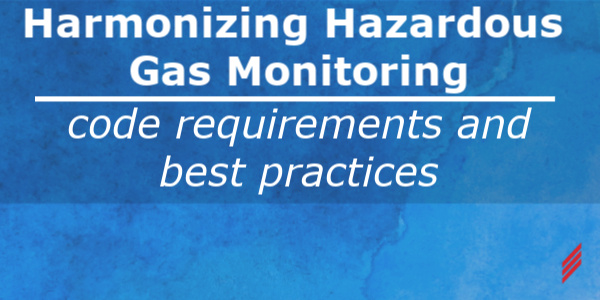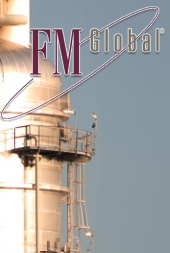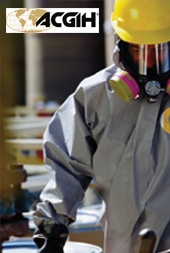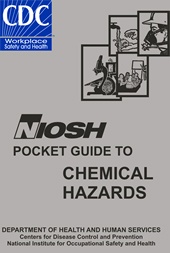Harmonizing Hazardous Gas Monitoring Code Requirements and Best Practices
by Jim Blais on May 21, 2019 10:56:00 AM

The manner in which a “hazardous gas monitoring, safety shutdown system” is designed, configured (hardware and software), validated and maintained will determine its ability to detect risks and automatically activate safety measures to avoid very dangerous situations.
For gas detection systems, which first need to accurately detect target gas hazards and then activate relevant safety countermeasures when pre-defined gas concentrations are exceeded, an important question comes up:
What is the probability of failing to perform the required countermeasure (safety function) in the event that pre-defined gas alarm level concentrations have been exceeded if an undetectable system failure has occurred?
“Freedom from unacceptable hazardous gas risks” is the ultimate goal and using every available resource – not only the “mandated codes” – but also considering and applying “best industry practices and experience” (harmonizing every resource) is the requirement.
Code Requirements:
Caution is advised when determining or being directed to “follow and apply” mandated code requirements for a Hazardous Gas Monitoring Safety System.
This “caution” pertains to applying only hazardous gas monitoring safety features that are mandated and required by codes – and going no further.
For example, some mandated codes (NFPA example) include the following or similar statements:
“Nothing in this standard is intended to prevent the use of systems, methods, or devices of equivalent or superior quality, strength, fire resistance, effectiveness, durability, and safety over those prescribed by this standard.”
“Alternative systems, methods, or devices approved as equivalent by the authority having jurisdiction shall be recognized as being in compliance with this standard.”
Most codes recognize that their standards are intended to be the “minimum requirements”.
Codes are developed by committee, follow technology and they may not be immediately adopted by the local authority having jurisdiction for “years” and they may be locally amended.
Considering many mandated codes do not adequately or completely address all of the potential and frequently changing complex hazards associated with the materials used in SEMI / Nano research or manufacturing facilities; we recommend an approach that will inform and consider the best practices and experience gained and applied in similar facilities.
Mandated Codes should never be used “alone” as the hazardous gas monitoring safety system design specification. The best approach is to incorporate all of the necessary design features required that will promote life safety and minimize any potential gas hazard. Attention to detail is critical throughout the entire design, installation, integration and validation process.
Best Practice (Harmonizing) Resources:
In addition to typical mandated codes (for example, the National Fire Protection Association and/or the International Code Council), there are many excellent best practice resources available for review and consideration including:

SEMI is the global industry association serving the manufacturing supply chain for the micro- and nano-electronics industries.
SEMIViews is an annual subscription-based product for online access to SEMI Standards. This resource provides password-protected access to over 900 Standards. Standards are arranged in “volumes” including those best practices focused on: Facilities, Gases, Process Chemicals and Safety Guidelines. New and revised Standards are automatically made available through the system ensuring access to the latest documents.
SEMI Guideline topic examples include:
SEMI F6 - Guide for Secondary Containment of Hazardous Gas Piping SystemsContainment application, piping annulus monitoring (pressure decay or vacuum), etc.
SEMI S2 - Environmental, Health and Safety Guideline for Semiconductor Manufacturing Equipment
Safety philosophy, Safety interlocks, Emergency shutdown, etc.SEMI S6 - EHS Guideline for Exhaust Ventilation of Semiconductor Manufacturing Equipment
Safety performance criteria for exhaust ventilation, validation methods, etc.SEMI S18 - Environmental, Health and Safety Guideline for Silicon Compounds
Disilane, monomethylsilane, dimethylsilane, trimethylsilane, dichlorosilane, etc.
T he mission of the Compressed Gas Association (CGA) includes developing, publishing, and globalizing the technical information as standards and practices for the safe, environmentally responsible, and efficient practices in the transportation, storage, and disposal of industrial and medical gases and their containers. This includes standards focused on protection and safe handling of hazardous gases.
he mission of the Compressed Gas Association (CGA) includes developing, publishing, and globalizing the technical information as standards and practices for the safe, environmentally responsible, and efficient practices in the transportation, storage, and disposal of industrial and medical gases and their containers. This includes standards focused on protection and safe handling of hazardous gases.
CGA Standards include those referenced and required by National and International Codes such as:
G-13 “Storage and Handling of Silane and Silane Mixtures”
P-20 “Standard for Classification of Toxic Gas Mixtures”
P-23 “Standard for Categorizing Gas Mixtures Containing Flammable and Nonflammable Components”

FM Global provides free access to their Property Loss Prevention Data Sheets.
These data sheets provide another resource focused on reducing risk to help reduce the chance of property loss due to fire, weather conditions, and failure of electrical or mechanical equipment. They incorporate nearly 200 years of property loss experience, research and engineering results, as well as input from consensus standards committees, equipment manufacturers and others. Examples include:
7-7 Semiconductor Fabrication Facilities
7-45 Instrumentation and Control in Safety Applications
7-91 Hydrogen
 The American Conference of Governmental Industrial Hygienist (ACGIH®) is a member-based organization that advances occupational and environmental health.
The American Conference of Governmental Industrial Hygienist (ACGIH®) is a member-based organization that advances occupational and environmental health.
Considering and applying hazardous gas monitoring alarm levels in accordance with the most recently adopted (and applicable) ACGIH… TWA-TLVs, STELs and Ceilings are highly recommended.
T he NIOSH Pocket Guide to Chemical Hazards is another source of general industrial hygiene information on several hundred chemicals/classes for workers, employers, and occupational health professionals.
he NIOSH Pocket Guide to Chemical Hazards is another source of general industrial hygiene information on several hundred chemicals/classes for workers, employers, and occupational health professionals.
The NIOSH Pocket Guide does not contain an analysis of all pertinent data, rather it presents key information and data in abbreviated or tabular form for chemicals or substance groupings (e.g. cyanides, fluorides, manganese compounds) that are found in the work environment. The information found in the NIOSH Pocket Guide should help users recognize and control occupational chemical hazards. You can download the mobile app as well at The National Institue for Occupational Safety and Helath (NIOSH) site.
About the Author
Jim has retired from Hallam-ICS, but his contributions to the company continue to be valued.
Read My Hallam Story
About Hallam-ICS
Hallam-ICS is an engineering and automation company that designs MEP systems for facilities and plants, engineers control and automation solutions, and ensures safety and regulatory compliance through arc flash studies, commissioning, and validation. Our offices are located in Massachusetts, Connecticut, New York, Vermont and North Carolina and our projects take us world-wide.

You May Also Like
These Related Stories

Why Do I Have to Perform A Dust Hazard Analysis (DHA)?

How to Interpret Harmonics Data – A Case Study



Comments (1)